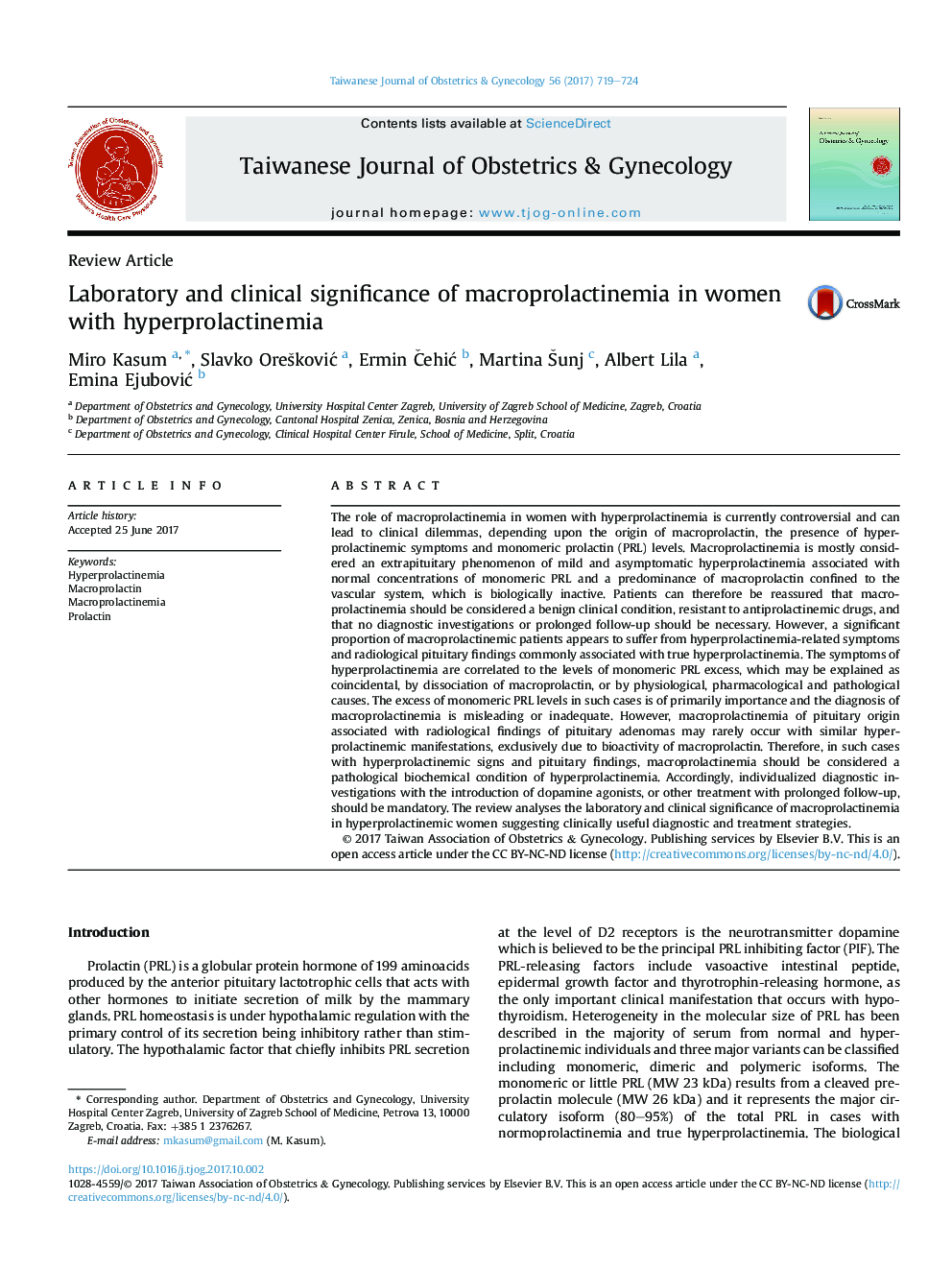| Article ID | Journal | Published Year | Pages | File Type |
|---|---|---|---|---|
| 8784456 | Taiwanese Journal of Obstetrics and Gynecology | 2017 | 6 Pages |
Abstract
The role of macroprolactinemia in women with hyperprolactinemia is currently controversial and can lead to clinical dilemmas, depending upon the origin of macroprolactin, the presence of hyperprolactinemic symptoms and monomeric prolactin (PRL) levels. Macroprolactinemia is mostly considered an extrapituitary phenomenon of mild and asymptomatic hyperprolactinemia associated with normal concentrations of monomeric PRL and a predominance of macroprolactin confined to the vascular system, which is biologically inactive. Patients can therefore be reassured that macroprolactinemia should be considered a benign clinical condition, resistant to antiprolactinemic drugs, and that no diagnostic investigations or prolonged follow-up should be necessary. However, a significant proportion of macroprolactinemic patients appears to suffer from hyperprolactinemia-related symptoms and radiological pituitary findings commonly associated with true hyperprolactinemia. The symptoms of hyperprolactinemia are correlated to the levels of monomeric PRL excess, which may be explained as coincidental, by dissociation of macroprolactin, or by physiological, pharmacological and pathological causes. The excess of monomeric PRL levels in such cases is of primarily importance and the diagnosis of macroprolactinemia is misleading or inadequate. However, macroprolactinemia of pituitary origin associated with radiological findings of pituitary adenomas may rarely occur with similar hyperprolactinemic manifestations, exclusively due to bioactivity of macroprolactin. Therefore, in such cases with hyperprolactinemic signs and pituitary findings, macroprolactinemia should be considered a pathological biochemical condition of hyperprolactinemia. Accordingly, individualized diagnostic investigations with the introduction of dopamine agonists, or other treatment with prolonged follow-up, should be mandatory. The review analyses the laboratory and clinical significance of macroprolactinemia in hyperprolactinemic women suggesting clinically useful diagnostic and treatment strategies.
Related Topics
Health Sciences
Medicine and Dentistry
Obstetrics, Gynecology and Women's Health
Authors
Miro Kasum, Slavko OreÅ¡koviÄ, Ermin ÄehiÄ, Martina Å unj, Albert Lila, Emina EjuboviÄ,
